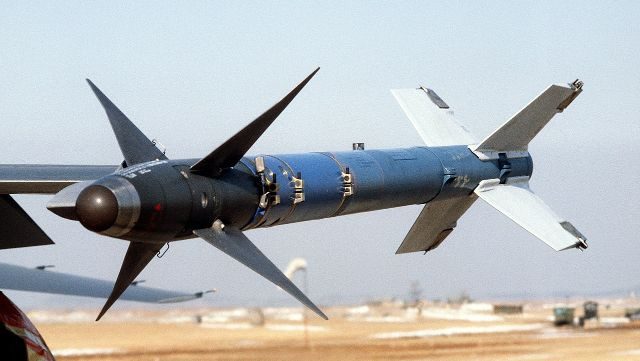In the icy hangars of Ørland Air Base, nestled along Norway’s rugged coastline, technicians bundle against the Arctic chill as they prepare F-35A Lightning II jets for missions over the vast, windswept skies of the High North.
These advanced stealth fighters, the backbone of Norway’s air force, are about to gain a sharper edge. On May 2, 2025, the U.S. Department of State approved a potential $370.9 million sale of 300 AIM-9X Block II Sidewinder missiles to Norway, a move that strengthens the Scandinavian nation’s air defense capabilities and deepens its integration with NATO allies.
The deal, announced by the Defense Security Cooperation Agency [DSCA], includes training missiles, guidance units, and support equipment, ensuring Norway’s forces remain agile and interoperable in an increasingly complex security landscape.

The acquisition marks a significant step in Norway’s ongoing military modernization, driven by the need to maintain robust defenses in a region where Arctic conditions and strategic interests converge. Norway, a NATO member sharing a border with Russia, has long prioritized air superiority and ground-based air defenses to protect its territory and contribute to alliance operations.
The AIM-9X Block II, a cutting-edge short-range air-to-air missile, will enhance the Royal Norwegian Air Force’s ability to engage threats with precision and agility.
According to the DSCA, the sale includes 300 tactical missiles, two special air training missiles, 24 captive air training missiles, and 40 guidance units, along with containers, software, spare parts, and U.S. technical support. The agency emphasized that Norway will have no difficulty integrating these weapons, building on its expertise with advanced systems.
Norway’s decision to procure the AIM-9X Block II reflects a practical approach to addressing modern aerial threats. The missile, developed by Raytheon [now part of RTX Corporation], is designed for close-in dogfights, where split-second decisions determine outcomes.
Its inclusion in Norway’s arsenal aligns with the country’s investment in platforms like the F-35A and the National Advanced Surface-to-Air Missile System [NASAMS], both of which will carry or launch the missile. The deal, valued at $370.9 million, underscores Norway’s commitment to maintaining a technologically advanced force capable of operating in the harsh Arctic environment, where subzero temperatures, heavy snow, and limited daylight pose unique challenges.
The AIM-9X Block II Sidewinder is an evolution of a storied missile family that traces its origins to the 1950s when the U.S. Navy introduced the original AIM-9 as a heat-seeking weapon for air-to-air combat. The Block II variant, operational since the early 2010s, represents a leap forward in performance.
With a range of approximately 20 miles and a speed exceeding Mach 2.5, the missile is designed to engage agile targets, from enemy fighters to drones. Its infrared focal-plane array seeker provides a 90-degree off-boresight capability, allowing pilots to lock onto targets without pointing the aircraft directly at them. This feature, paired with a helmet-mounted cueing system like the Joint Helmet Mounted Cueing System [JHMCS], enables pilots to guide the missile by simply looking at the target, a game-changer in high-stress engagements.
The missile’s thrust-vectoring control system, which adjusts the direction of its rocket exhaust, grants exceptional maneuverability, enabling it to pursue targets through tight turns and evasive maneuvers. The AIM-9X Block II also incorporates lock-on-after-launch [LOAL] capability, allowing it to be fired before the seeker acquires the target, a feature that enhances its flexibility in dynamic combat scenarios.
Its high-explosive blast-fragmentation warhead is designed to maximize damage, scattering shrapnel to disable enemy aircraft. Enhanced resistance to infrared countermeasures, such as flares, ensures the missile remains effective against sophisticated adversaries. The Block II’s redesigned fuze and digital ignition safety device improve both in-flight reliability and ground handling, reducing risks during transport and loading.
The deal’s training components highlight Norway’s focus on readiness. The two special air training missiles [NATMs] and 24 captive air training missiles [CATMs] allow pilots to simulate engagements without expending live rounds, preserving tactical missiles for operational use.
The 20 tactical and 20 CATM guidance units ensure the missiles’ seekers and electronics are fully functional, supporting both combat and training missions. These elements reflect the comprehensive nature of the package, which extends beyond hardware to include software, technical documentation, and U.S. contractor support. Raytheon, the principal contractor, will oversee the integration process, leveraging its decades of experience with the Sidewinder family.
